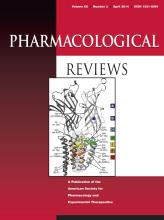Abstract
Alcohols and other anesthetic agents dramatically alter neurologic function in a wide range of organisms, yet their molecular sites of action remain poorly characterized. Pentameric ligand-gated ion channels, long implicated in important direct effects of alcohol and anesthetic binding, have recently been illuminated in renewed detail thanks to the determination of atomic-resolution structures of several family members from lower organisms. These structures provide valuable models for understanding and developing anesthetic agents and for allosteric modulation in general. This review surveys progress in this field from function to structure and back again, outlining early evidence for relevant modulation of pentameric ligand-gated ion channels and the development of early structural models for ion channel function and modulation. We highlight insights and challenges provided by recent crystal structures and resulting simulations, as well as opportunities for translation of these newly detailed models back to behavior and therapy.
Footnotes
This work was supported by the National Institutes of Health National Institute on Alcohol Abuse and Alcoholism [Grants R01-AA06399 (to R.A.H.) and R01-AA013378 (to J.R.T.)]; and startup funds from Skidmore College.
- Copyright © 2014 by The American Society for Pharmacology and Experimental Therapeutics
PharmRev articles become freely available 12 months after publication, and remain freely available for 5 years.Non-open access articles that fall outside this five year window are available only to institutional subscribers and current ASPET members, or through the article purchase feature at the bottom of the page.
|






